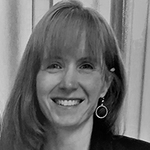Question
How can I support non-biased assessment?
Answer
- Understand that all races are equal
- Use income level information to HELP children in need
- Learn the personal preferences of children in care
- Try to work WITH parents
- Differentiate for each student’s needs
Supporting a non-biased assessment includes the understanding that every race is the same. We are all the human race, no matter our skin, hair, or eye color. Things like our abilities and intelligence levels do not differ between people because of their skin color or race.
As for those who provide you information about their income level, use this information to help the children in your care. For example, if you know the child is struggling with reading and you have been informed that this family is financially set, suggest a tutoring service. Or on the other hand, if you see a child who needs help with math who you know is unable to afford tutoring services, locate local resources for that family. For example, libraries and organizations like Big Brothers and the YMCA. At times these organizations will offer free tutoring for those in need.
Be sure to figure out the children's needs and preferences above your own. If the children are old enough, you can discuss with the children what their preferences include. This may be as simple as asking a crying child if he wants a hug. If he says yes, give him a hug. If he says no, let him know that you are available in case he changes his mind, then make sure to be available.
Include the parents when assessing children. Including the parents can help the children be more comfortable and less stressed out. Observational assessment should not be a stressful assessment format. If the teacher is stressed or the children are stressed, an assessment will not come out accurately.
Last but truly not least, differentiate as much as possible. For example, if you have a child with ADD who struggles to stay in his seat, think about using alternative seating such as a rocking chair, a stool, or perhaps a beanbag. If you spend time figuring out what type of seating this child will be most comfortable in, you are more likely to have a better assessment result than if you give him the typical hard seat he squirms in.
Reframing and supporting characteristics of non-biased assessment is not an easy feat. To summarize, reasons for bias include racial differences, income levels, personal preferences, dislike of parents, and students are slow. You need to understand that all races are equal. Use income level information to help the children in need. Learn the personal preferences of the children in your care and try to work with the parents. Differentiate for each student's needs. As said before, this can be a challenge at the beginning of the class or when a new child comes into the classroom. However, you will find that it is worth the effort.
This Ask the Expert is an edited excerpt from the course, Helping Children Learn Through Bias-Free Observation and Assessment, presented by Rebecca Reynolds, EdD.
